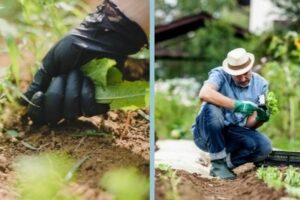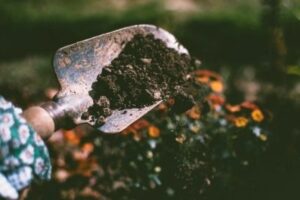“Man masters nature not by force, but by understanding.”
—Jacob Brownowski, philosopher
With spring upon us, the dormant plants of winter are ready to burst into bloom. But there are some things you can be doing right now to set your garden up for maximum growth and vibrant color from now until the end of fall.
First, a bit of caution: try to resist a deep spring cleaning of your garden beds. Dead leaves, hollowed-out plant stems, and other organic matter are still important homes for nesting insects. They are vital to your garden and you don’t want to wipe them out before they have a chance to emerge when consistent warm temperatures arrive.
Same goes for dandelions. Don’t cut them just yet. Wait for warmer weather. Dandelions serve as a spring food source for native pollinators. Without it, they’ll leave your garden and seek out nourishment elsewhere.
A little pruning and tidying here and there is okay — especially around flowers that are sensitive to disease (such as roses) from the previous fall, but otherwise avoid wholesale raking of that seemingly dead stuff.
A little observation goes a long way: this is a good time to be intentional about noting exactly when the sun is hitting your garden and for how long throughout the day. Knowing this will help you determine which plants and shrubs to choose so that they will thrive in sun and shade.
Related Gardening Stories:
Yard bathed in sunlight? Click here to read tips on growing a sunny garden.
Yard not getting enough sunlight? Click here to read our story on tips for growing a shady garden.
Early spring is an ideal time to cut back on last year’s perennials and make room for new growth. The rule of thumb: leave 6-8 inches of stem above the soil.
Mid-April is when you want to start to plant new cool-season plants such as radishes, lettuce, and parsley. You’ll have a full month to do your planting.
Wait until around the middle of May before planting new warm-season plants such as squash and tomatoes, peppers and basil. Again, you’ll have around one month to get these plants established in the ground.
Hand-pull weeds that have started growing. Do it now when it is easily manageable and before the weeds overtake the garden as temperatures start to rise. Consider spreading a layer of mulch now to discourage weed growth.
 If you intend to fertilize, aerate the garden first to avoid runoff; you want those nutrients to get deep into the soil. Rule of thumb on when to fertilize: wait until soil temperatures are consistently above 50-55 degrees. This will ensure your garden is getting the most out of the fertilizer.
If you intend to fertilize, aerate the garden first to avoid runoff; you want those nutrients to get deep into the soil. Rule of thumb on when to fertilize: wait until soil temperatures are consistently above 50-55 degrees. This will ensure your garden is getting the most out of the fertilizer.
Another good gauge: “Do your first fertilizer application 4-6 weeks after the last frost of winter,” said Chrissie Segars, a Ph.D. turfgrass specialist and professor at Texas A&M AgriLife Extension in Dallas.
“Typically for homeowners, we recommend more slow-release-based fertilizer than quick release. That limits the amount of fertilizer applications you have to make.”
One other often-overlooked tip: organize your tool shed for the season ahead. Give your tools a good washing to get rid of any stuck-on debris that may be hiding disease. You don’t want to carry it over from one season to the next.
Your local independent lawn and landscape dealer can give you advice on any specific questions you have. They can also recommend expert landscapers who can give you specific advice on plants and shrubs and other gardening topics. To find a dealer near you, click here.

